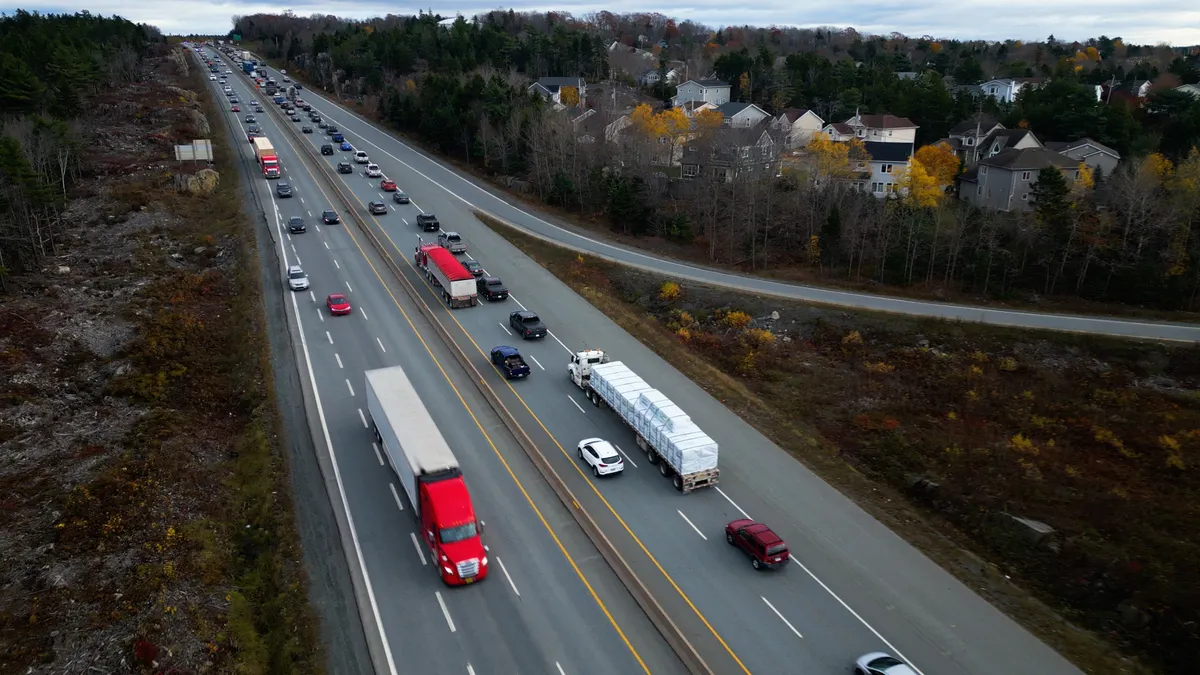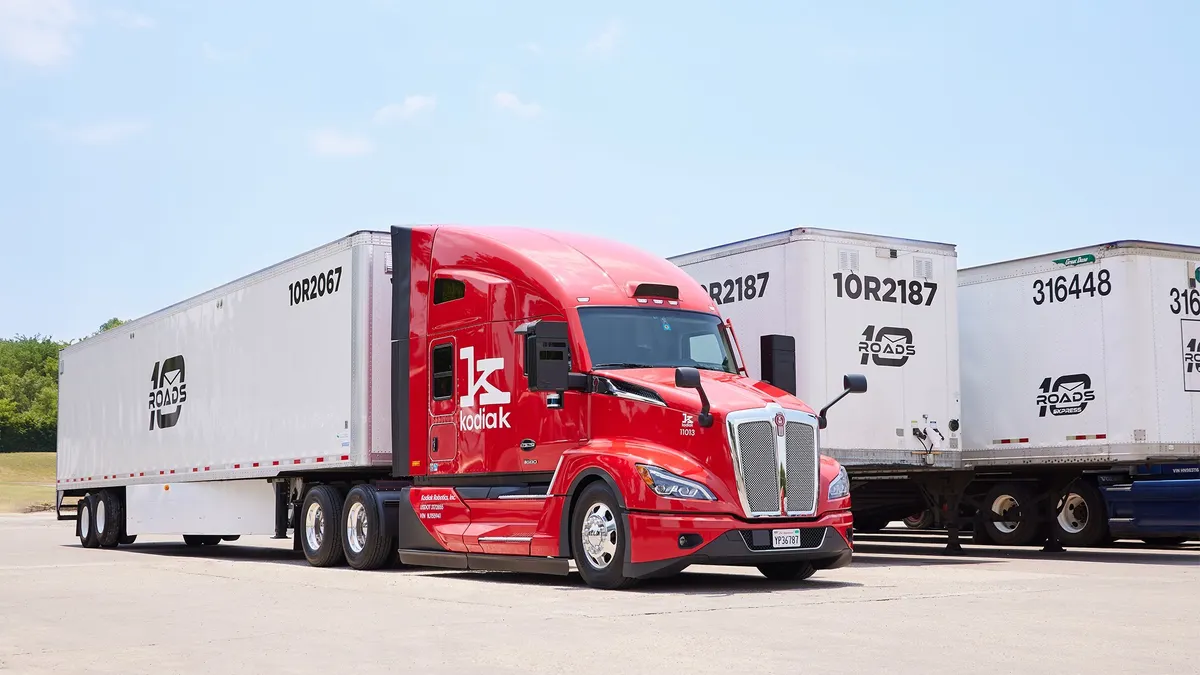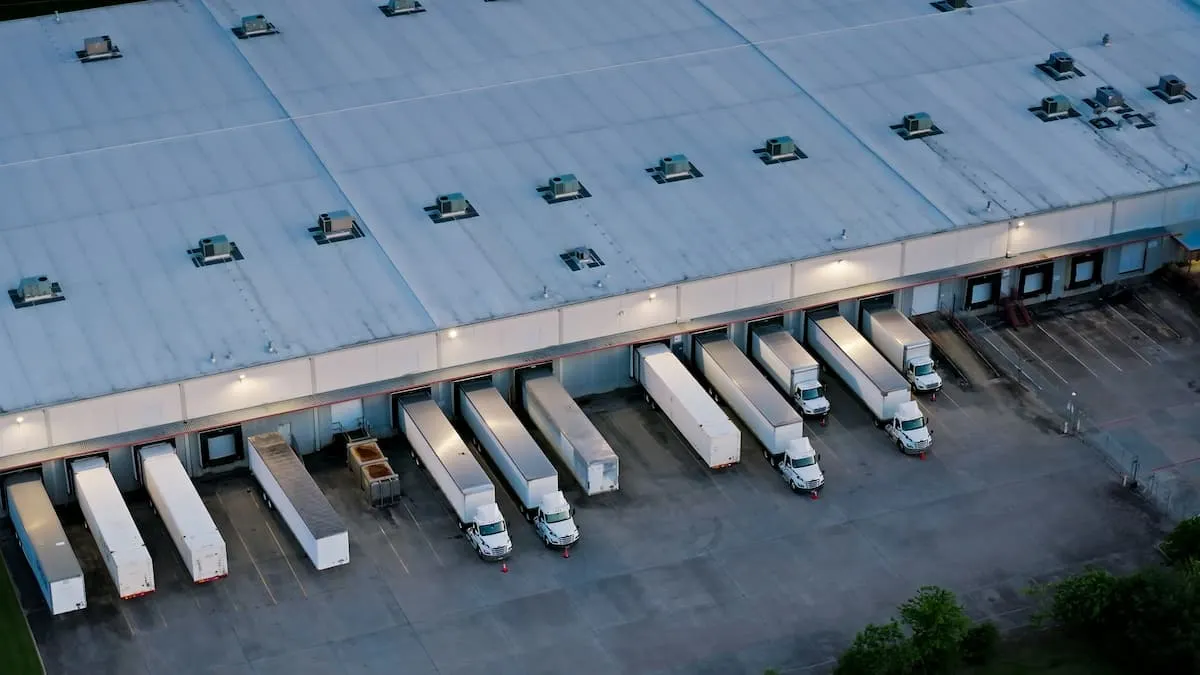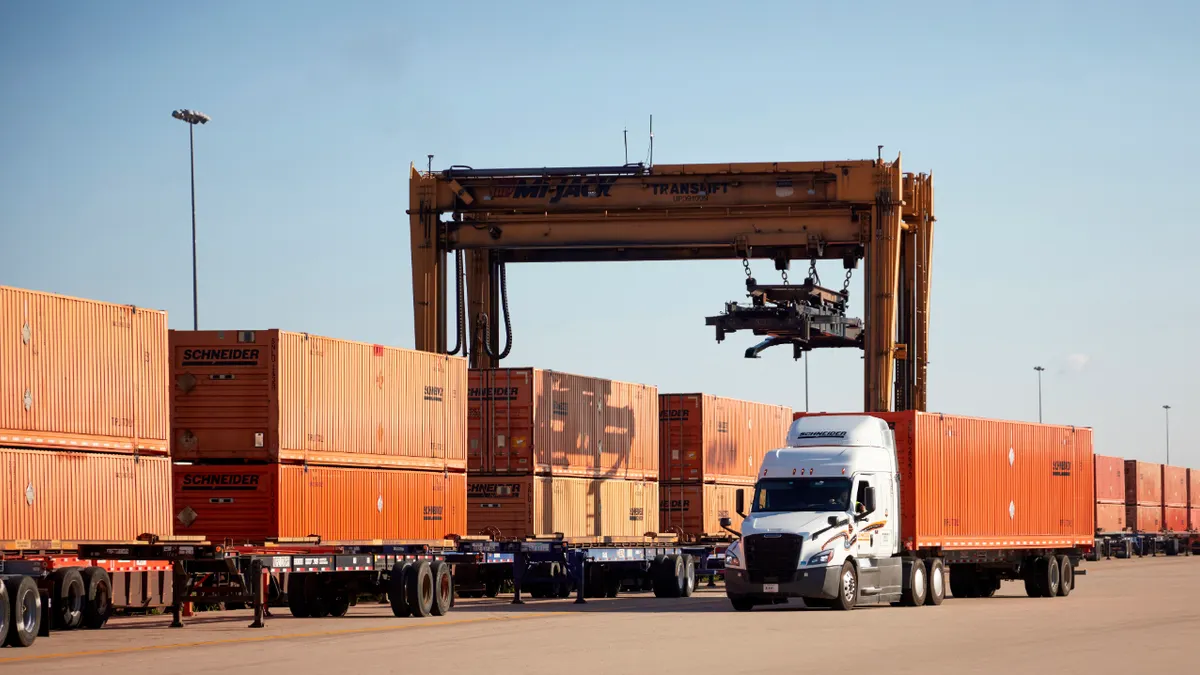This is Patent Pending. Supply chain-related patent applications are filed every week and this is where we'll talk about the ones that could have the biggest impact on the supply chain and the ones that challenge the norm. We want to give you an idea of where supply chains are heading and what the industry is thinking. Keep an eye out for this column on Fridays.
A matchmaker for freight
Uber envisions a system in which truck drivers and freight loads are automatically matched in order to minimize additional travel time or travel costs for the carrier. This would save time and resources "by prioritizing the matching of new freight loads to freight operators with the lowest additive travel and/or cost," the application, filed this week, reads.
This process is handled by tracking the location of a "candidate set" of truck drivers and a computer system calculates these costs when determining how to match a load. This system can calculate a surcharge based on this additional cost, which could vary for carriers for the same load depending on location and the cost associated with getting to it. The same system can use the carriers current planned route to calculate the additional travel cost of getting to another new load.
This is one method digital freight brokers are exploring to differentiate themselves: efficiency through automation.
Convoy, one of Uber Freight's competitors, announced Automated Reloads, which picks loads for carriers in a way that allows them to get back to where they started and thus reduce the number of empty miles driven. This can save costs for carriers and shippers, and could save on emissions.
Read up:
Right pick path? There's an app for that
As retailers wade into store-based fulfillment they have to figure out the fastest and most efficient pick order from the store's inventory.
A patent application filed by Walmart takes in order information and separates them based on load number, required delivery time and commodity types.
An algorithm uses this input data along with information on the store layout to create an optimized pick path for one or more orders. The system will "batch" orders based on store location. A store map overlayed with the optimized path is sent to a user device like the one shown above.
As online orders grow in volume the retailers fulfilling these orders will have to come up with the most efficient way to get items where they need to be, especially as they promise faster delivery times and deal with similar fulfillment needs for in-store pickup. Batching has been an important area of research operations in distribution and fulfillment centers. Walmart is looking at applying these lessons in a store setting.
Read up:
-
Grouping orders by SKU can save picking time, speed up fulfillment
-
Choosing the right fulfillment option is about weighing cost and speed
Brighter items for better robot vision
Automation in Amazon warehouses sees to be around every corner.
Ankle-high Kiva robots shuffle around shelves of inventory and a robotic arm will help move containers, but there are some tasks the e-commerce giant has had some trouble automating.
That's why humans pick and pack the items and load the trucks. One reason robots struggle with these tasks, Amazon wrote in a patent application filed this week, is that with the current state of computer vision a robot can struggle to tell what it is looking at if an item is in a tote, shelf or another container.
Amazon proposes increased contrast to help robots see items in these locations. To achieve this contrast, Amazon suggests that items be "sprayed or otherwise coated with a fluorescent marking solution." A robot would be outfitted with something that would emit ultraviolet light, like a blacklight or other source. The fluorescent marking would glow when under the UV light and create more contrast.
Amazon is still at least 10 years away from a "lights-out" fulfillment center where no human workers are needed, Scott Anderson, director of Amazon Robotics Fulfillment, told Supply Chain Dive earlier this year. So the question remains: Is it a lights-out facility if the robots need blacklights to see?
Read up:
- Report: Amazon's new packing robots to replace workers
-
Amazon deploys 'Pegasus' robots in sortation centers to reduce miss sorts
Please fasten your shipping container before take-off
As companies begin drone delivery parts of the process will need to be perfected.
One part is how packages will be carried. A patent application filed by WestRock Shared Services lays out the issues. Drone deliveries will often happen outside in the elements, so the container will need to be waterproof. However the container also has to keep the item safe during flight and the drone has to be able to easily carry it.
This patent suggests one solution: a foldable, waterproof container with a lid that will lock onto the body of the container. The top of the container will have two notches where two drone arms can grab it during transport and prevent it from shifting. It might seem simple, but looking at the drones currently in operation, it is apparent that the industry has yet to land on a standardized method for transporting cargo carried by the drone.






















